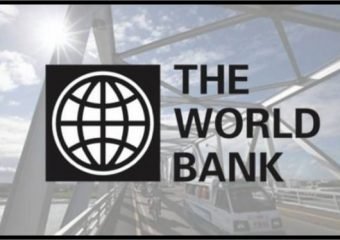Last Updated on: 7th July 2023, 06:02 pm
World Bank Says Pakistan’s Economic Growth Remains Stagnant On Account Of High Deficit And Low Foreign Reserves
According to the latest report titled “South Asia Focus: Making (De) centralization Work” published by World bank on Sunday, the Bank analyzed that Progress on poverty reduction had been expected to be restricted in the course of a macroeconomic adjustment period.
The steps to rehabilitate macroeconomic stability in Pakistan completely depend on growth, which is expected to have reduced to 3.3 percent. Pakistan needs to reinstate these buffers, especially due to instability in global financial markets that can affect Pakistan’s ability to acquire private external investments. And the external demand can be decreased on account of the weak global economy and an increase in trades pressure.
Growth Expected To Remain Low In The Near Term
The major country’s risk comes from potential difficulties in carrying out the necessary adjustments and structural reforms. About the outlook, the report said growth was projected to slow down to 2.4 percent in the fiscal year 2020, with continued fiscal combination and a compact monetary policy stance. The IMF adjustment program entailed a rebalancing from domestic to external demand. This recovery had been conditional on relatively balanced global markets, a descend in international oil prices and lowered political and security risks, stated the report.
Inflation is going to increase in the fiscal year 2020 to 13 percent however it will start descending afterward. The rise in prices will be operated by the second-round impact of exchange rate pass-through to domestic prices. The WB report further stated the country’s commercial banks would remain well-capitalized. The current account deficit was expected to descend to 2.6 percent of GDP in the fiscal year 2020 and further to 2.2 percent in the fiscal year 2021, as increased exchange-rate flexibility would hold up a modest recovery in exports and rationalization of imports.
The consolidated fiscal deficit including grants was projected to reach 7.5 percent of GDP in the fiscal year 2020 and remain elevated at 6.2 percent in the fiscal year 2021. The public debt-to-GDP ratio was expected to remain high in the fiscal year 2021 at 80.8 percent, increasing the exposure to debt-related shocks, said the World Bank report.
The poverty headcount, measured using the $1.9 per person per day international poverty line, is projected to remain at the fiscal year 2019 level. Across South Asia, food prices have been rising in the last few months.
Food prices in 2018 had been stable in Pakistan, Nepal, and Afghanistan but descended in India, the Srilanka, and Maldives. But, food prices recently have been rising in all countries except Sri Lanka. World Bank also noted that India’s economic growth rate has decelerated for the second consecutive year, the World Bank (WB) has projected it will fall to six percent following a broad-based deceleration in the initial quarters of this fiscal year.

Researcher, Blogger, Content Writer, Online Marketing Expert, Aptitude Test & Admissions Expert, Career Counselor.
PEC REGISTERED. ENGINEER. (NED University of Engineering & Technology)
CEO / Founder (The Educationist Hub)






Leave a Reply